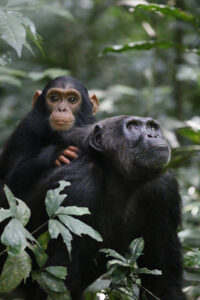
The lyrics of traditional Okinawan songs have been found to record the past climate and geological history of the Ryukyu Islands, now known as Okinawa Prefecture, Japan. This revelation comes from a new study conducted by a University of Hawaiʻi at Mānoa Earth scientist in collaboration with Ryukyuan music practitioners. Their findings, published in Geoscience Communication, were distinguished as an Editor’s Choice article by the journal’s publisher.
“This paper is a proof-of-concept for using classical Ryukyuan music as records of Indigenous knowledge,” said Justin Higa, the lead author of the study and a postdoctoral fellow in the Department of Earth Sciences at the UH Mānoa School of Ocean and Earth Science and Technology (SOEST). “This work aims to show how science and culture are not two distinct entities, but can be combined to teach both Indigenous arts and Indigenous science.”
Bridging Science and Culture
The study delves into a repertoire of Indigenous Ryukyuan classical music that documents the 18th-century ocean voyages of envoys from the Ryukyu Kingdom. These songs detail the winds, waves, and volcanic activity observed during their journeys. With Higa’s geological expertise and the musical proficiency of master instructors June Uyeunten and Kenton Odo, the team successfully integrated Indigenous Ryukyuan knowledge in song with Western scientific literature to identify overlapping insights.
The authors, all practitioners of classical Ryukyuan music, are affiliated with the Ryukyu Koten Afuso Ryu Ongaku Kenkyu Choichi Kai USA, Hawaiʻi Chapter, a music school with branches on Oʻahu, Maui, Kauaʻi, and in Los Angeles.
Matching Ancient Observations with Modern Data
By comparing these musical observations with 20th- and 21st-century scientific literature, the researchers discovered that the wind directions mentioned in the songs align with seasonal changes following the East Asian Monsoon. Additionally, they linked rough ocean conditions described in the songs to historical and current Pacific Ocean circulation patterns and typhoons. The study also interpreted a record of an 18th-century volcanic eruption on an isolated island.
“Indigenous knowledge, tied to the land someone is most familiar with, is one avenue for applying place-based learning to make complex environmental science more accessible to general learners,” explained Higa. “Identifying sources of Indigenous knowledge, by the knowledge holders/practitioners themselves, is a unique opportunity to make new connections between art and science, improve how we connect science to the daily lives of Indigenous Peoples, and ensure the correct interpretation and usage of Indigenous knowledge.”
Implications for Future Research and Cultural Heritage
As 2025 approaches, marking the 125th anniversary of Okinawan immigration to Hawaiʻi, Higa finds personal significance in combining geoscience with his Okinawan heritage. “I hope this work can help connect the descendants of Okinawan immigrants in Hawaiʻi, who generations later, may not speak the language, with the arts and knowledge recorded in these songs,” he expressed. “More of these descendants may then be inspired to become scientists or Indigenous practitioners, or both.”
Looking ahead, the authors aim to catalog more classical and folk Ryukyuan songs to document additional historical records of environmental science, including water resources, ocean life, and flora and fauna. This endeavor not only enriches the scientific community’s understanding of historical climate patterns but also preserves the cultural heritage embedded in these traditional songs.





